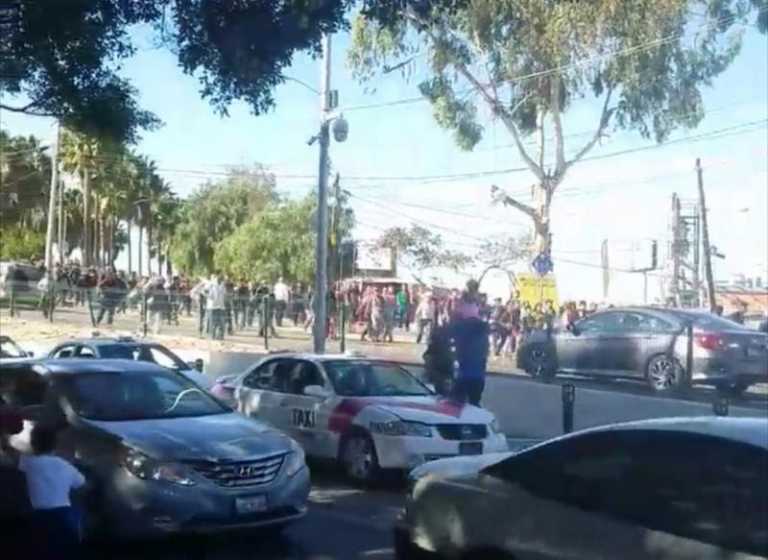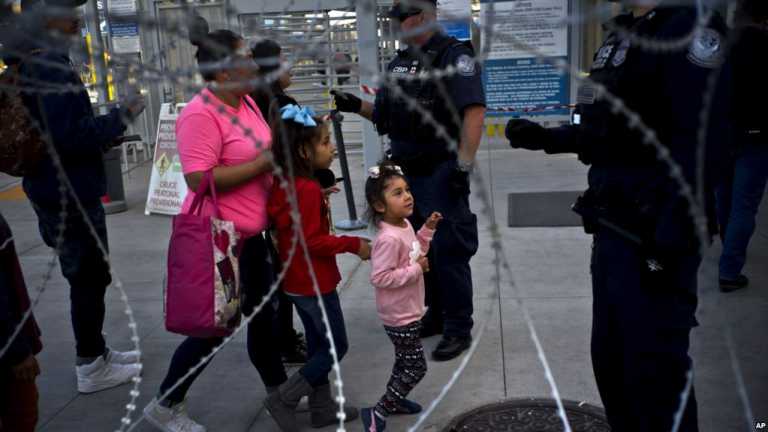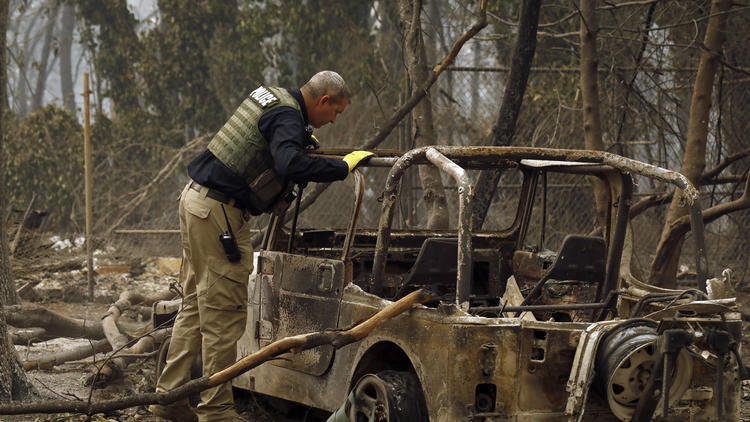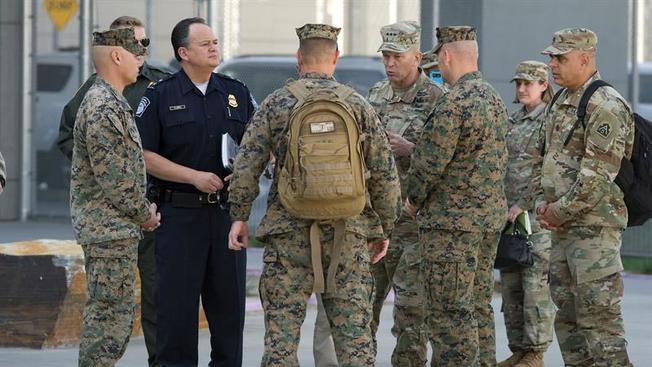Autoridades de la Oficina de Aduanas y Protección Fronteriza (CBP) y del Departamento de Defensa informaron este viernes que hasta mediados de diciembre permanecerán las tropas en la frontera entre California y México, como parte del Operativo Línea Segura para responder a las caravanas migrantes.
Bajo este dispositivo se «monitorea» el recorrido de la multitudinaria avanzada que partió de Honduras hacia Estados Unidos en búsqueda de asilo político y lleva casi un mes en ruta.
Las posibilidades de que pudieran registrarse disturbios han preparado con anticipación al Gobierno para «cualquier contingencia», sostuvo en una rueda de prensa Pete Flores, director de operaciones terrestres de CBP en San Diego.
Se ha solicitado el apoyo de 5,000 soldados en la frontera, incluyendo 1,300 que desde ayer se instalaron entre San Diego (California) y Tijuana (México).
Las autoridades pudieran considerar cualquier opción, incluso, si fuera necesario, «suspender operaciones» o «un cierre completo» en la frontera, adelantó Flores.
«Si tenemos cualquier evento como lo que vimos cuando la caravana se movió de Centroamérica hacia México, en el que creamos que se pone en riesgo ya sea a los viajeros o a los oficiales, entonces tomaríamos los pasos necesarios para proteger a la frontera», comentó.
De esta manera, se recurrió a las tropas que continúan con labores de apoyo, como la colocación de alambradas en la garita internacional, así como una fuerte presencia de vehículos militares en la zona.
Jeffrey S. Buchanan, teniente general de la Armada, subrayó por su parte que se trata de un operativo temporal de asistencia, y que en este caso la tarea de hacer cumplir la ley recae en CBP y específicamente en Patrulla Fronteriza.
Entre otras funciones brindarán apoyo médico, una policía militarizada para proteger a los propios soldados y un equipo aéreo que ayude a que oficiales tengan mejor movilidad en la frontera, agregó el militar, quien dijo permanecerán en el sitio hasta el 15 de diciembre.
Tras fracasar en su intento de que la ONU les facilitara transporte gratuito, los miles de migrantes de la caravana de centroamericanos acampados en Ciudad de México acordaron este viernes prepararse para dejar el sábado la capital y retomar su marcha a pie hacia Estados Unidos.
Paralelamente, la segunda caravana de migrantes centroamericanos, conformada por unas 2,000 personas que entraron en México el 29 de octubre, prosiguieron este viernes su camino a través del sureño estado de Oaxaca en dirección a Veracruz.
Asimismo, una tercera caravana originada en El Salvador dejó este viernes el sureño estado de Chiapas para adentrarse en Oaxaca y seguir la misma ruta que los contingentes anteriores.
Las autoridades estadounidenses reiteraron que todo aquel que ingrese al país de forma irregular será arrestado y deportado, pero por el contrario, quien solicite asilo a través de los puertos de entrada, será procesado y recibirá su entrevista de «miedo creíble» por persecución para determinar si es elegible.
«Quisiera que pensaran sobre seguridad fronteriza de la misma forma que una casa; cuando una persona llega a su casa debe tocar la puerta principal y presentarse», refirió Rodney Scott, jefe de sector de Patrulla Fronteriza en San Diego.
Dado que el espacio de procesamiento es limitado y EEUU se prepara para recibir una oleada de unos 7,000 mil inmigrantes, habrá coordinación con autoridades mexicanas para que el ingreso hacia el puerto de entrada sea en grupos reducidos, tal y como se ha hecho en anteriores caravanas.
Mientras tanto, el resto del contingente deberá esperar su turno en albergues de la ciudad mexicana de Tijuana, según contemplan autoridades estadounidenses.
Scott agradeció que el gobierno mexicano haya ofrecido refugio a los inmigrantes centroamericanos, por lo que sugirió que salvo que la solicitud de asilo sea por miedo a dicho país, «posiblemente no vaya muy bien».
Algunos grupos defensores de derechos humanos se han manifestado contra la presencia de personal militar en la frontera en respuesta a la caravana.
«Preocupa mucho que a una crisis humanitaria estén enviando tropas militares, que se están preparando como si nuestras comunidades fueran un campo de guerra», expresó Pedro Ríos, director del Comité de Amigos Americanos de San Diego.
«Aunque digan que no tienen funciones de procurar leyes, de todas formas van a estar armados, tienen esa facultad, están preparados para la guerra y puede suceder una tragedia», lamentó el activista.
El presidente, Donald Trump, limitó este viernes las opciones para los solicitantes de asilo en la frontera con México mediante una orden presidencial que impide que esta protección sea concedida a quienes acceden al país de forma irregular.















